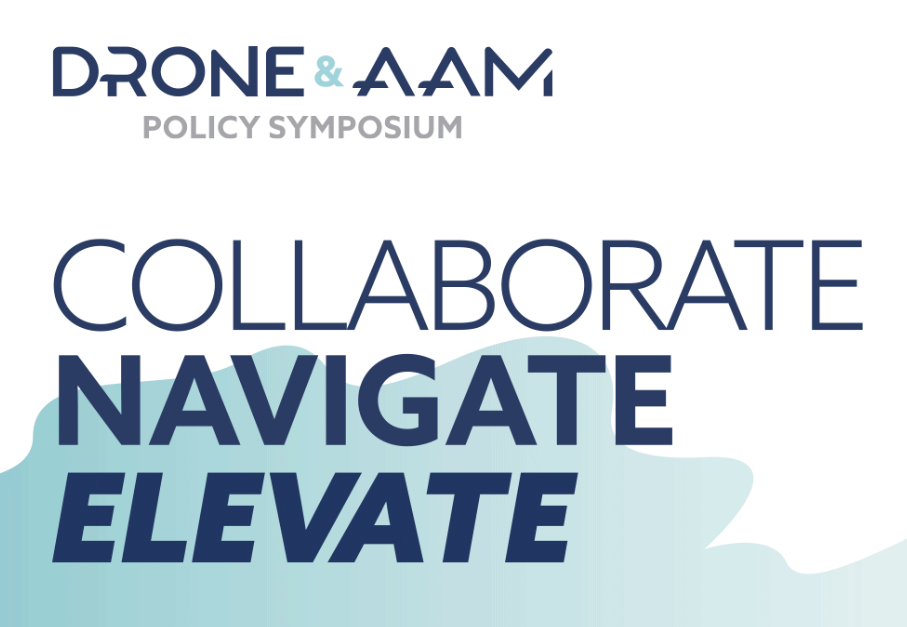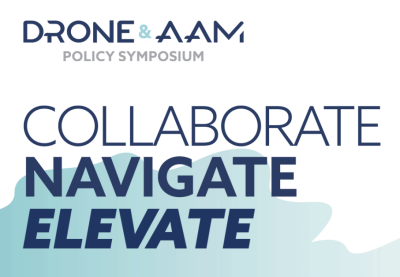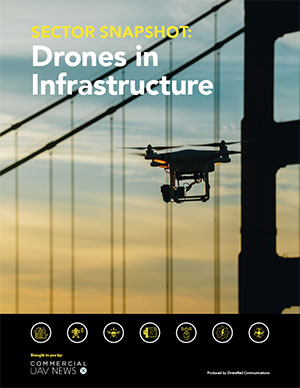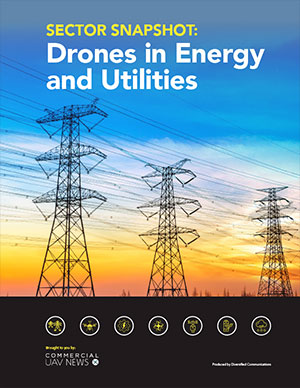Late last month, industry and government leaders came together in Washington, D.C., for the AUVSI Drone and AAM Policy Symposium. The two-day event, held at Nationals Park, included panel discussions, fireside chats, and individual talks covering the latest developments in policy, regulations, and trends for the UAV industry. Commercial UAV News was present for this year’s event, and as we covered shortly after returning, one of the major topics of conversation among attendees and on stage was frustrations around delays to the Part 108 proposed rules. Of course, as we know now, that Notice of Proposed Rulemaking (NPRM) was released shortly after the conclusion of this event.
While the proposed rules around BVLOS drone operations was undoubtedly the biggest theme of conversations, it was not the only thing discussed over the two days. In addition to that topic, the future of Advanced Air Mobility (AAM) in the U.S. was a major conversation driver, as were potential regulations and decisions to be made around foreign-made drones used in the U.S., particularly those from China.
Shaping the National Strategy for AAM
Multiple sessions throughout the two-day event covered the latest developments around AAM and how the federal government is thinking about this future. Michael Harden, an aviation analyst with the U.S. Department of Transportation, spoke about the progress being made with the National Strategy to advance AAM in the U.S. He explained the interdepartmental nature of this strategy’s origins and provided an update on its status.
“The strategy was assigned to DOT from a congressional action that said, ‘Please go write a national strategy on mobility. Make sure you include all these other agencies, and the stakeholders, and write up what the government needs to do,’” Harden said. “So that’s what we’ve done. We are on the home stretch, and the strategy should be out – or will be out – in the late September, early October time frame.”
He went on to explain that once that report is finalized, it will have to go through a series of reviews from Congress and various committees, and then become available to the public. In terms of the contents, he says the strategy will include “about 40” recommendations about “what the federal government needs to do to ensure advanced air mobility to be successful in the United States.”
Beyond the specifics around that national strategy, speakers also discussed some other broad considerations to this nascent market, including how to – or not to – model around other regions’ regulations.
“They do a lot of segregation of the airspace over in Europe and some of the other countries,” said Wendy O’Connor, the executive director of the Advanced Air Mobility and UAS Integration office within the FAA. “That’s not conducive to the U.S. If we were to segregate the airspace, it would give us less flexibility and make it more restrictive. I don’t think that’s what people want us to do.”
She stressed the importance of remaining agile and flexible, given how rapidly this space can change.
Finally, the topic of automation was also raised, as this will be a critical piece of unlocking the true potential of an AAM future. Akbar Sultan, the director of NASA’s Airspace Operations and Safety Program, talked about why this is so important given how complex the airspace will become.
“That variety, density, and complexity essentially stretches the current human-only mode of operation for provision of safety and services,” he said. “Because the human does not have the bandwidth or the reaction time to be able to scale this drone mission. So it’s the humans who need automation to assist. We’re not replacing the human; the human is there. But it’s automation and additional autonomy to assist a human to deal with this future scale and provide those future safety and efficiency services.”
Balancing National Security and Supply Chain Realities
In addition to the discussions around AAM, some speakers also touched on the potential security threats present from foreign-made drones, particularly those manufactured in China. Senator Rick Scott (R-FL) spoke briefly in opening remarks to kick off the event’s second day, and spoke a bit about the potential threat. As part of that talk, he described some of the legislative efforts being undertaken in this area, noting that efforts started by preventing the military from purchasing Chinese-manufactured drones, then doing the same for the federal government. Senator Scott told the crowd his reasons for pushing on this are two-fold, referring to both national security concerns and his desire for American companies to do well in the sector.
A separate session featured a fireside chat led by AUVSI CEO Michael Robbins along with Elizabeth Cannon, the executive director of the Office of Information and Communications Technology and Services, part of the U.S. Department of Commerce. Throughout the conversation, she drew on her experience working with similar regulations around products from foreign adversaries in the automotive industry to explain how a similar set of rules could work in the commercial drone sector. Part of that, she noted, is balancing risk with practicality.
“We are very much concerned with the national security risks, but we have to balance that with supply chain practicalities,” she said, referring to the need not to completely upend industry when putting these kinds of regulations in place.
In thinking about specific challenges for this type of rulemaking within the UAV sector, Cannon noted some key differences between this area and the aforementioned automotive rules, which focused on connected vehicles. One of the big differences is the direct-to-consumer model, which makes enforcement more difficult, as does the $800 de minimis threshold, for which imports under that threshold are subject to less stringent reporting requirements.
She talked about a couple of strategies that could potentially be used to address these challenges. One would be to focus the regulations on particular technologies within a drone rather than the entire product, putting the “onus on the regulated parts to do that supply chain analysis.” She noted the importance of thinking through who the regulated party would be, and the dangers of making that the end user who couldn’t identify that supply chain.















Comments